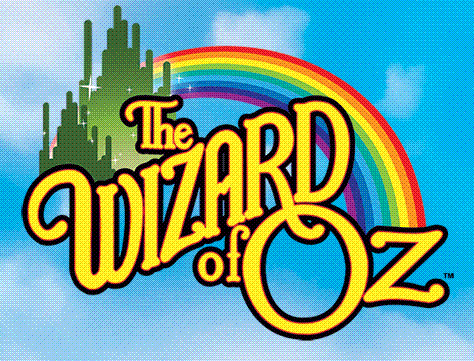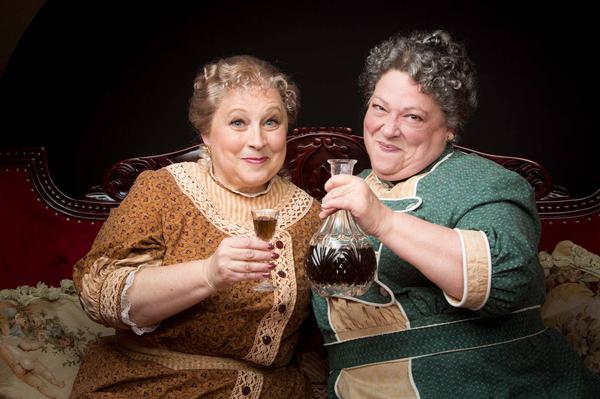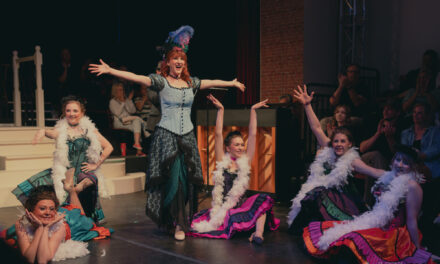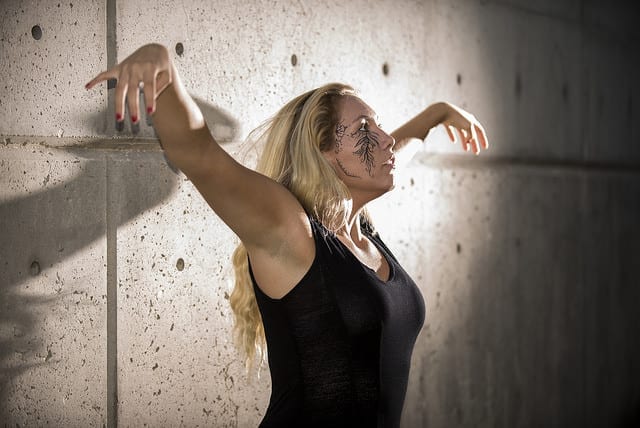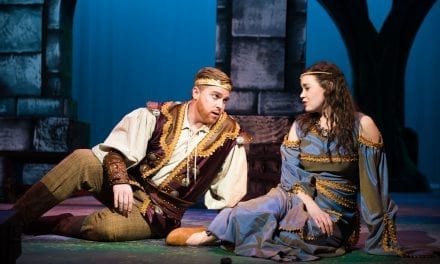IVINS — Over a century old, L. Frank Baum‘s The Wonderful Wizard of Oz is a favorite among classic American children’s literature which became even more popular after the 1939 film adaptation. Now in Utah, audiences spanning can see live on stage the story of Dorothy Gale (played by Kari Yancy), a young girl from Kansas whose desire to find a place of her own and a timely Kansas tornado take her to the magical land of Oz. While friends from her humdrum farm life join her on her journey as the Cowardly Lion (Trevor Nicholas), Tinman (Todd Nielsen), and Scarecrow (Mark Reis). However, Dorothy’s worst enemy appears in the form of the Wicked Witch of the West (Mary Gutzi). In the end, it is Dorothy’s own Aunt Em (Annie Ramsey Lewis), appearing as Glinda, the Good Witch of the North, who ultimately helps Dorothy find her way home.
The stage version of The Wizard of Oz follows the familiar story with little deviation, and this Tuacahn production led by director Timothy Threlfall invites audiences to experience the movie’s iconic moments anew. For example—although unable to use the magic of Technicolor to contrast between Kansas and Oz—the sets (designed by Doug Ellis) and costumes (designed by Doug Baker and Kay Baker) transition from dull grey to vibrant colors as Dorothy finds herself a long way from home. Most notably, Dorothy’s gingham dress and matching basket lining change from black and white to the blue so memorably worn by Judy Garland. Threlfall paid great attention to detail when designing the tornado sequence, creating a scene in live action that mimicked the same items that the Dorothy of the movie saw as she careened through the air. Choreographer Rommy Sandhu also captured the essence of the classic by including pieces of the original step sequence in “Follow the Yellow Brick Road” and its reprises.
While it was delightful to see these familiar moments, one of Tuacahn Amphitheatre’s specific charms is the unique effects that can only happen with an unforgettable landscape and a budget to match. In this production, this came in the form of live animals, aerial movement, realistic set pieces, and elemental effects. Live goats established a realistic portrayal of Dorothy’s farm life while the horses that pulled Professor Chester Marvel (played by Bart Williams) and his cart added to his eccentricity. Most impressive was the use of a live dog as Toto (Oggie), who acted his role of sleeping in the poppies with particular aplomb, thanks to Yancy’s patient and subtle coaxing. The extensive flying system in place at Tuacahn was used under the aerial direction of Cees de Kok to fly a variety of actors and props including monkeys, witches, a tornado, a hot air balloon, and even a life-sized cow. Finally, Ellis’s scenic design incorporated both an authentic automobile and a creative interpretation of a tornado. One of my favorite visual effects was a projection of the Wizard of Oz’s face on a wall of water flanked by two pillars of fire. Ellis’s use of both concrete and abstract imagery and the elements of fire and water created the necessary onstage magic.
Effects aside, the charm of this production really lay in what each cast member brought to the stage. Reis’s extraordinary flexibility gave the Scarecrow an almost cartoony physicality, helping him feel like a fictional figment of Dorothy’s imagination. Each time he fell, which was frequently, Reis tumbled and stretched and landed in patterns more characteristic of a rag doll than a human. Nielsen’s nimble footwork as the Tinman was impressive to watch as he managed each step while clad in his full-bodied costume. During the various “We’re Off to See the Wizard” sequences, he completed each forward-moving sequence with the stiff upper body of a man of tin but the joints of an accomplished dancer. Though I found Nicholas’s accurate pronunciation of the word “nerve” in “If I Only Had the Nerve” uncharacteristic of the Cowardly Lion I have grown up loving, he brought the perfect balance of character and tradition into “If I Were King of the Forest,” even dropping the short “i” syllable and elongating the “f” in the repeated phrase “if I.”
Lewis was a tender though weary Aunt Em, and her accurate display of the stoic work ethic of a Depression-era farm wife kept Aunt Em from becoming a caricature. However, the higher pitched voice she used as Glinda minimized the Good Witch’s importance in the story and overshadowed any resemblance to Aunt Em. As both Professor Chester Marvel and The Wizard of Oz, Williams’s charisma made the idea that others would blindly follow him a reasonable one. The many successes were not limited only to the adult members of the cast; each soloist among the children’s ensemble of munchkins sang clearly and accurately. However, Ashton Een as the Mayor stood out through his commanding stage presence, body language, and commitment to his munchkin accent.
Even when surrounded by such strong castmates, Yancy shone in the role of Dorothy. Not only did she deliver Dorothy’s classic look, but Yancy brought a childlike innocence to her character. In particular, she captured the incessant chatter of a young child throughout her dialogue and the vocal purity of youth by using only a gentle vibrato as she sang E. Y. Harburg and Harold Arlen’s songs. “Somewhere Over the Rainbow” sounded refreshingly like the earnest dreams of a child instead of an adult’s power ballad.
Amid these superb elements, however, a few details came up glaringly short. And in a theater with seemingly unlimited resources, I was disappointed by the missing detail in three specific areas. As the body language of the actors indicated the wind speed had increased, I glanced curiously to the windmill placed prominently in the scene. Although I had seen it spinning prior to the show’s start, its blades remained completely still in the midst of the tornado. Later, when the Wicked Witch of the West turned over an hour glass to enumerate the minutes left in Dorothy’s life, I hoped to see the sand slowly slipping away. Despite multiple references to the decrease in remaining sand, the upper chamber of the large hourglass remained completely full. The most anticlimactic moment was when the Wicked Witch crossed to center stage to stand conspicuously atop the trap door. When Dorothy doused her in water to cause her demise, the trap door simply lowered. Although Gutzi’s tortured cackle filled the theater, her body was simply lowered visibly as the trap door descended with no smoke-and-mirrors effects to conceal it.
On the other hand, there were also moments where the overuse of technical elements distracted from the show’s natural wonder. Glinda consistently entered the stage via her enchanted bubble. This bubble, lit by florescent colored LED lights, was a gawdy industrial contrast to Glinda’s poofy and feminine pale pink ballgown. I also found myself wishing for a more traditional approach to the sets. Changes in location from the corn field, orchard, forest, and field of poppies were handled through the use of stained glass projections on the rear backdrop. Though effective, each lacked the charm of a traditional set. Finally, while fireworks are always fun to watch, the pyrotechnics didn’t really make sense in relation to the plot and offered little more than a showy display of what Tuacahn can do.
Tuacahn has created a larger-than-life tribute to the classic American novel and movie, and their resources make this a spectacle unavailable anywhere else.

